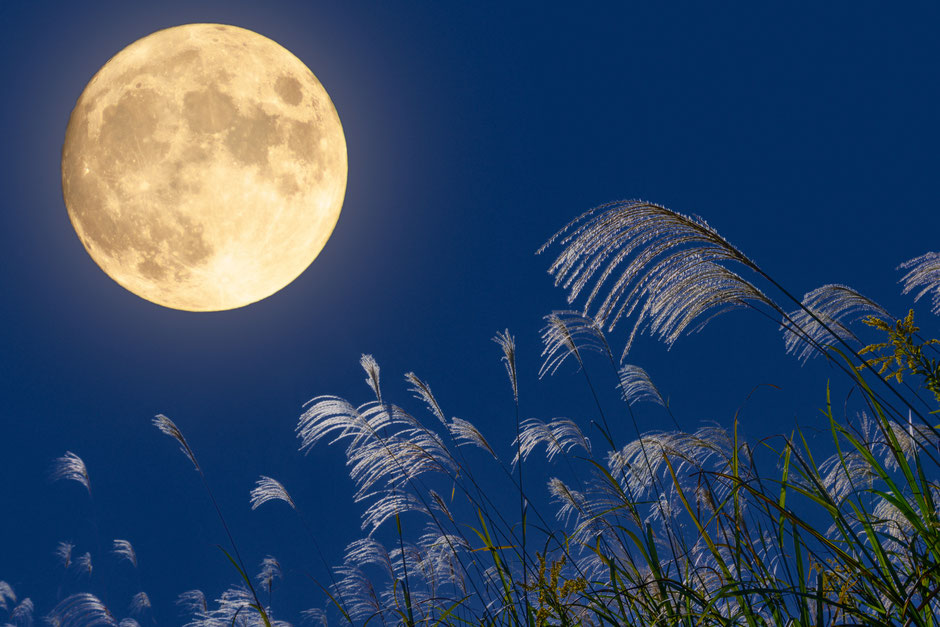
#Hotel Kuki in #Kuki City, Saitama Prefecture.
The air becomes more autumnal and the sky clearer day by day in September, a month known for such events as the "Fifteen Nights" and "Otsukimi," but this time we would like to take a deeper look at the "Mid-Autumn Moon. You may find some hints on how to spend the Mid-Autumn Meigetsu day differently from usual.
Gazing at the moon and eating dumplings. Such an image of the Mid-Autumn Moon has become widespread in Japan today, but it was originally a Chinese custom. It is said to have been introduced to Japan in the Heian period (794-1185).
What is "Fifteen Nights"? What is its relationship to the Mid-Autumn Moon?
Many of you may be familiar with the Mid-Autumn Meigetsu as "the fifteenth day of the fifth month. Since the moon gradually waxes from new moon to full moon over a period of 15 days, the night of the 15th day counting from the day of the new moon in the lunar calendar came to be called "Jugo-no-yoru.
Speaking of the Mid-Autumn Moon, "tsukimi dango" (moon-viewing dumplings)
When it comes to offerings for moon viewing, "tsukimi dango" is often the first thing that comes to mind. It is said that the custom of making offerings came from China during the Heian period (794-1185), along with the Mid-Autumn Meigetsu. In China, the custom was to offer moon cakes, a traditional pastry, but in Japan, offerings were made of potatoes and beans, which changed their shape and became the moon-viewing dumplings we know today.
In the old days, farmers measured the passage of time by the waxing and waning of the moon and sensed the changes of the seasons as they farmed. For these farmers, autumn was the time to harvest their crops. The round dumplings, which resemble the full moon, are not only a symbol of prayer and thanksgiving for a bountiful harvest, but also a symbol of fruition and happiness.
The traditional way of offering dumplings is to place a stand with a clear view of the moon and place 15 dumplings on a platter high in the air in honor of the night of the 15th day of the month. It is said that the dumplings are piled up in the shape of a mountain because it was believed that the topmost dumpling would lead to the spirit world.
